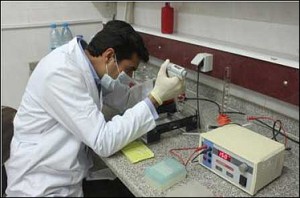 TEHRAN (ISNA)- A group of scientists of led by an Iranian researcher Nader Enqeta have designed analogue computers by invisible cloak.
TEHRAN (ISNA)- A group of scientists of led by an Iranian researcher Nader Enqeta have designed analogue computers by invisible cloak.The field of metamaterials has produced structures with unprecedented abilities, including flat lenses, invisibility cloaks and even optical "metatronic" devices that can manipulate light in the way electronic circuitry manipulates the flow of electrons.
Now, the birthplace of the digital computer, ENIAC, is using this technology in the rebirth of analog computing. A study by researchers at the University of Pennsylvania, The University of Texas at Austin and University of Sannio in Italy, shows that metamaterials can be designed to do "photonic calculus" as a light wave goes through them.
A light wave, when described in terms of space and time, has a profile in space that can be thought of as a curve on a Cartesian plane. The researchers' theoretical material can perform a specific mathematical operation on that wave's profile, such as finding its first or second derivative, as the light wave passes through the material.
Essentially, shining a light wave on one side of such a material would result in that wave profile's derivative exiting the other side. Metamaterials capable of other calculus operations, such as integration and convolution, could also be produced.
Viewing and manipulating this type of light wave "profile" is an everyday occurrence for applications like image processing, though it is typically done after the light wave has been converted to electronic signals in the form of digital information. The researchers' proposed computational metamaterials could almost instantly perform such operations on the original wave, such as the light coming in through the lens of a camera, without conversion to electronic signals.
The study was led by Nader Engheta, the H. Nedwill Ramsey professor of Electrical and Systems Engineering in Penn's School of Engineering and Applied Science, and Alexandre Silva, a postdoctoral researcher in Engheta's research group. They collaborated with Francesco Monticone and Andrea Al� of The University of Texas at Austin and Giuseppe Castaldi and Vincenzo Galdi of the University of Sannio in Italy.
It was published in the journal Science.
By ISNA
The Iran Project is not responsible for the content of quoted articles.










